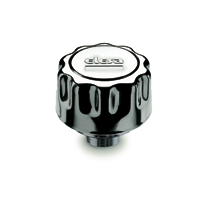
Breather caps are commonly used to regulate the pressure of machines and industrial equipment. As their name suggests, they allow the machines and equipment with which they are used to “breathe.” Breather caps work by allowing excess pressure to escape while simultaneously preventing dirt and debris from entering. Below are six common types of breather caps.
#1) Breather Cap With Sealing Closure
Some breather caps are designed with a sealing closure. They are constructed with a gasket around the base. When installing a breather cap with a sealing closure, this gasket will compress against the opening of the machine or equipment, thereby creating a tight seal.
#2) Push-Fit
Push-fit breather caps are characterized by a simple push-based installation method. They don’t feature the same threaded body as most other breather caps. Push-fit breather caps are still used in the same pressure-regulating applications, but they require a push-based installation method.
#3) PA Technopolymer
While they are available in different materials, one of the most popular materials used in the construction of breather caps is polyamide-based (PA) technopolymer. It’s a type of thermoplastic that’s prized for its heat-resistant and durable properties. Breather caps are often exposed to hot gases. With PA technopolymer breather caps, you don’t have to worry about heat damaging or degrading them.
#4) SFV
You may come across SFV breather caps when shopping for these pressure-regulating devices. SFV doesn’t refer to a specific type of material. Instead, it refers to the valve type. SVF breather caps are designed with SFV 10 or SFV 100 mb valves. The former will open when the pressure exceeds 10 mb, whereas the latter will open when the pressure exceeds 100 mb. When the pressure inside of the machine or equipment reaches this limit, the breather cap’s valve will open automatically.
#5) Breather Caps With Vacuum Breaker Valve
There are breather caps with vacuum breaker valves. They are typically used in sealing applications where liquid is stored, such as coolant and other fluid reservoirs. The vacuum breaker is designed to prevent a vacuum suction so that the fluid doesn’t flow backward.
#6) Double-Valve Breather Caps
There are also double-valve breather caps. Double-valve breather caps feature two valves. Valves, of course, are used to regulate the flow of substances, such as fluid or gas. They work by allowing fluid or gas to travel in one direction but not the other direction. Double-valve breather caps feature two separate valves.
